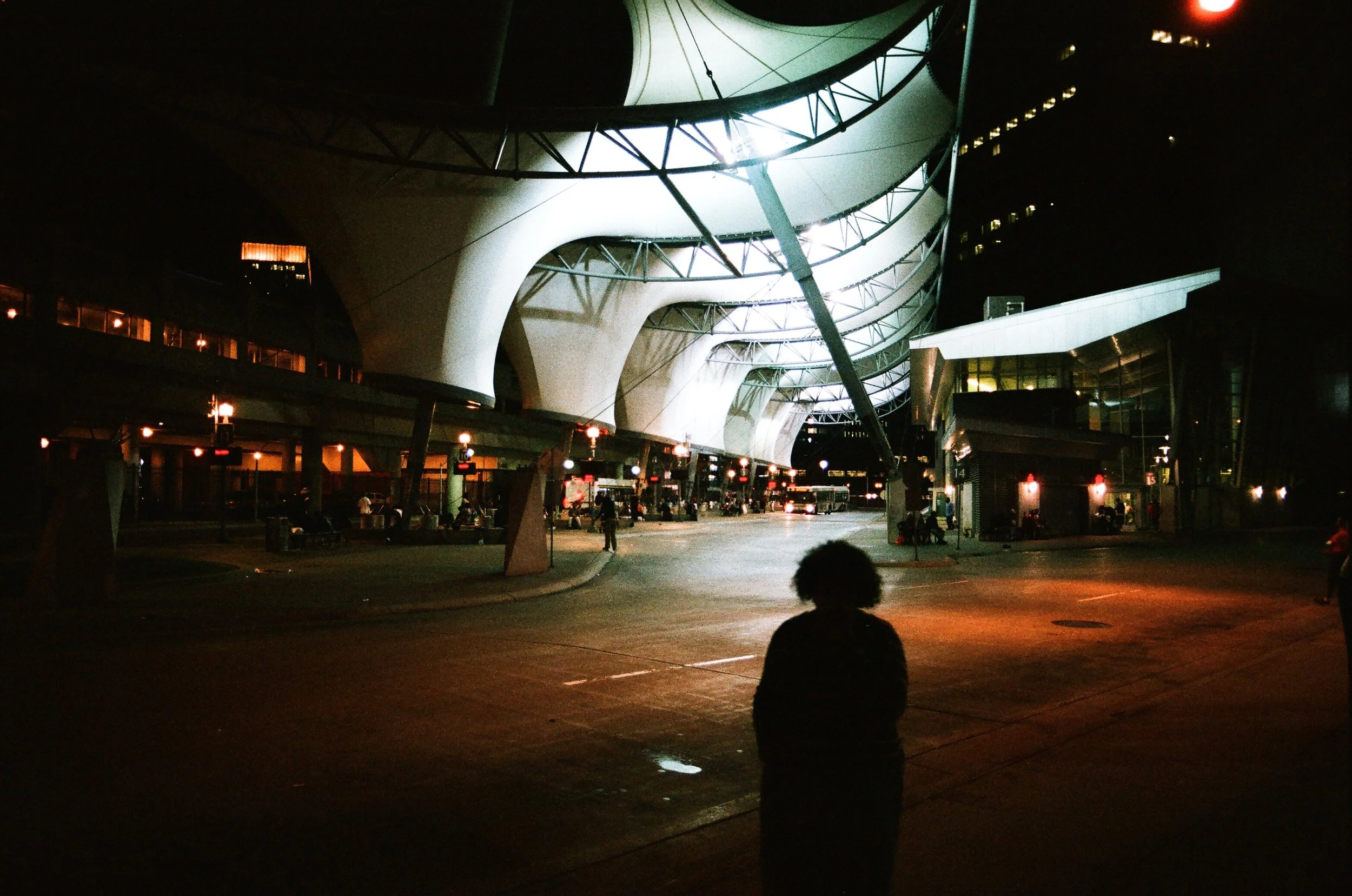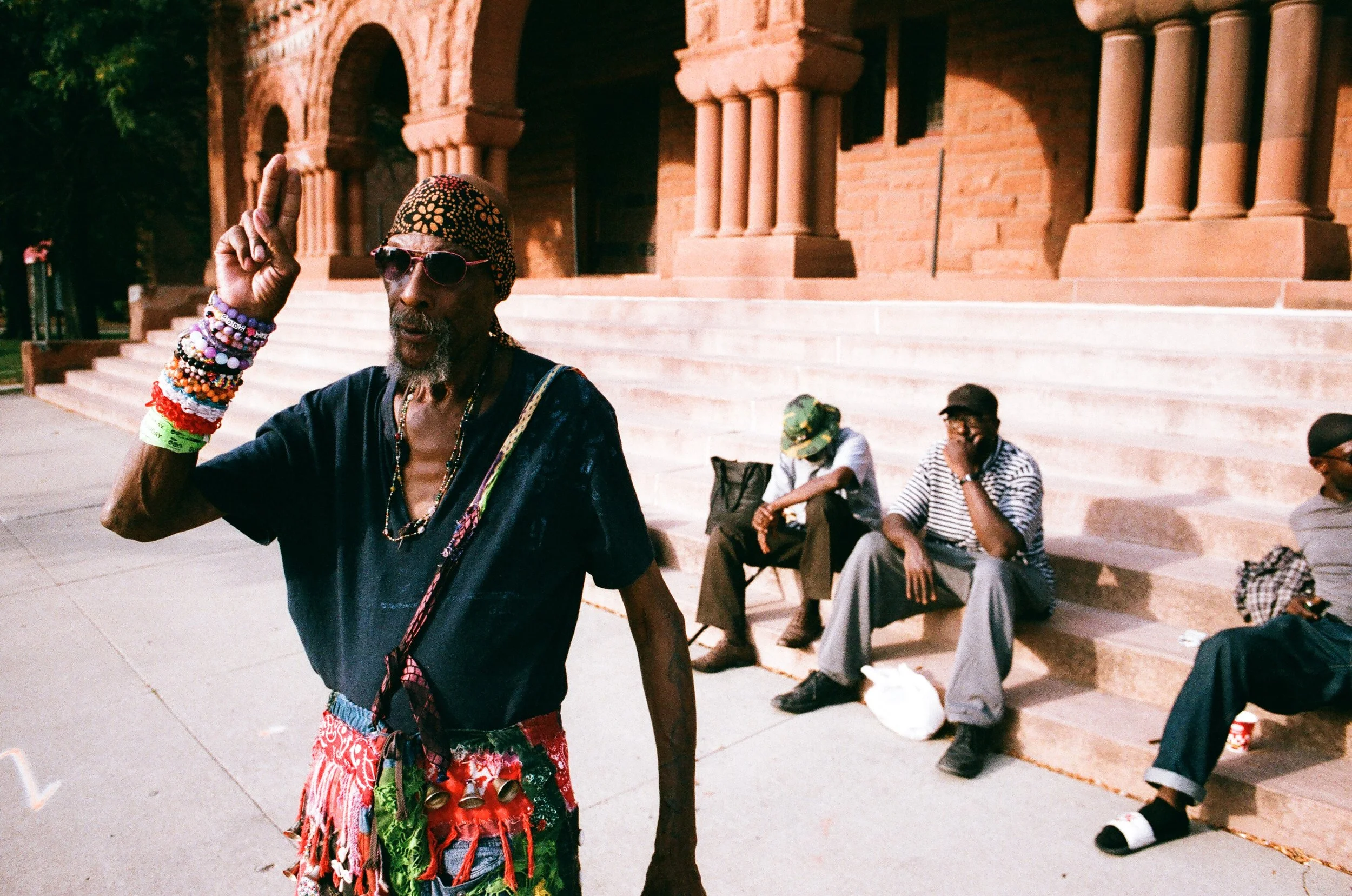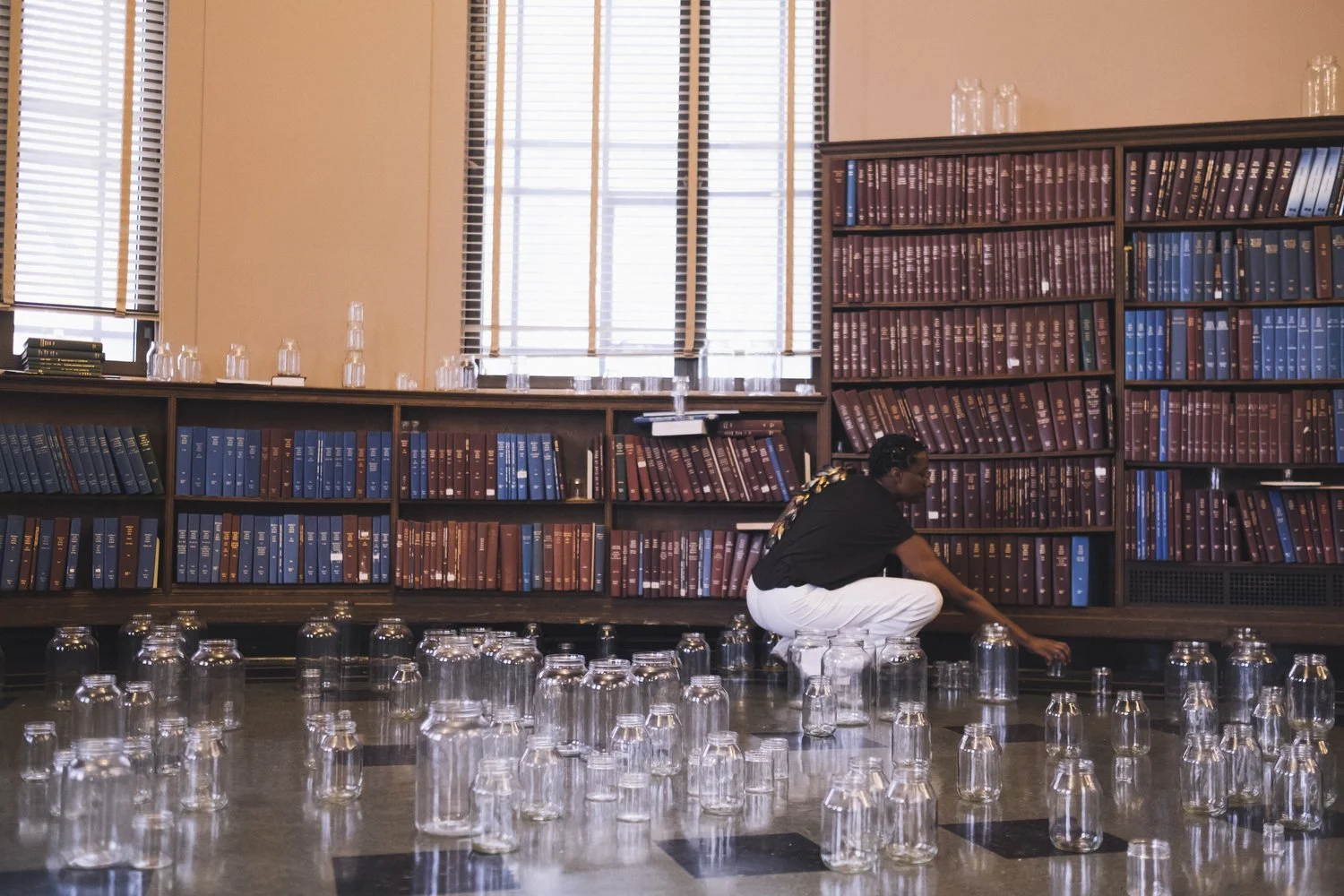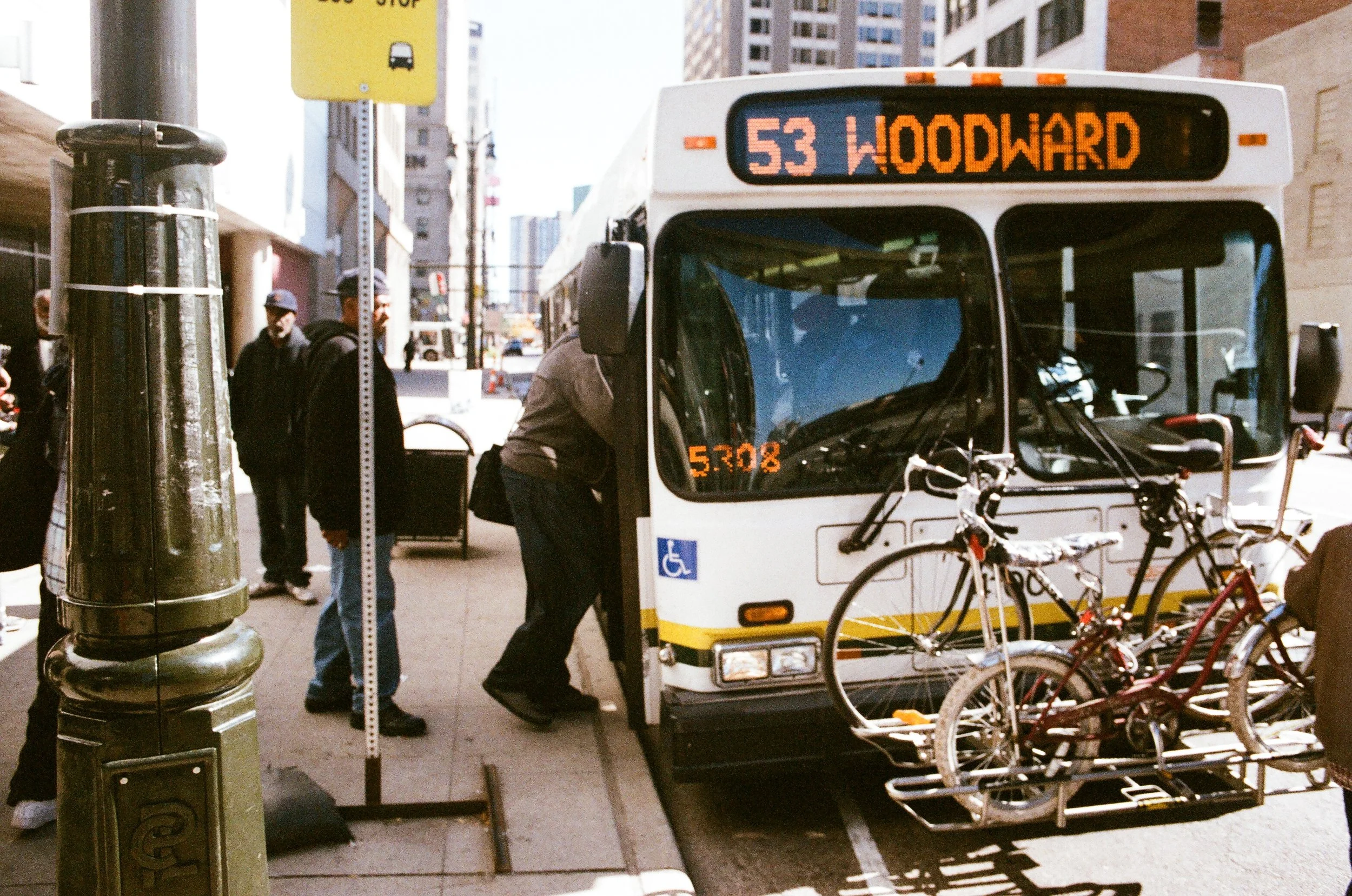
Lillien Waller x bree gant
I Just Want to Tell You What I Saw
Hey Can We Meet?
I’m late and flustered when I arrive in Kresge Court at the Detroit Institute of Arts (DIA) to meet multidisciplinary artist, dancer, documentarian, and 2020 Kresge Artist Fellow bree gant. She’s relaxed and welcoming, and the space has a low-level buzz that becomes high-level not long after I introduce myself and sit down. It’s Field Trip Friday, and the kiddos are running riot everywhere. But like many things in Detroit, after a while, you call it a vibe and move on. “The cultural center is the first place I walked without my parents,” gant explains. “I mean, I was on school field trips. I went to Golightly, which is right around the corner. But the DIA and the main library were my first places of agency.”
Space, I soon learn, is a key character within gant’s artistic practice: not only how much there is and who has access to it but also how we move through it, how our bodies exist—and who we become—within it. And not just public space. gant reminds me of the expansive space of imagination. “I was very much an introvert as a child,” she continues. “Books and trains and parks were my favorite places to be and be by myself, too. I still love going places by myself and just people watching, you know? Riding the bus, public transit, reading a book, writing in a journal. That is it for me. It’s a very rich life.”
Left: Aunt Dot, 2018. Top Right: Still from Wend, 2022. Bottom Right: Buttonman, 2018
She seemed to be the only one in her family who didn’t know that she was an artist. gant had intended to pursue international business at Howard University, a way of participating, she says, “in a global conversation.” But the academic focus on business and entrepreneurship only underscored what she didn’t yet understand. She felt as if she was constantly performing. So why not perform? She pursued film, which still wasn’t really quite “it,” but it did lead her to photography, which, as it turns out, is.
“I love film, and I work often in video,” gant says, “but it was the image-making process that caught me, and my photography teachers who really spoke to me, and what I ended up taking most of my classes in.
“And so I came out of college doing photography because that’s literally just how I moved through the world. I would document every space I went to and share the photos, and that’s how I got to know people and connect with folks. And, that’s how I learned and understood concepts and came into adulthood.”
This is The Practice.
bree gant ain’t trying to work no traditional job. Well, she might. Not really. Ok, whatever. She has applied for positions and is almost always overqualified or underqualified: the internships, the associate-ships, the nonprofit development offices that are an artist’s bread and butter. They are perfect—and necessary—for someone, although probably not her. The obligations and stressors of a 9 to 5 would not allow her to do this creative work, and her creative work is trying to say something specific and necessary about this city and the irony of its revitalization. Those endless all-white rooms we all stood in, those of us who returned to the city we love, our birth.
“I moved back home to Detroit. Everyone was talking about the art scene here and how great it was and the revitalization,” she recalls. “And I got home and it was white. Everything. All the media was white, you know, but the city was still very Black. Most of the spaces that I moved in were very Black. And I’m like, ‘Why aren’t these things being reflected?’
“Coming back to Detroit at that time—when it was very fast-changing and power was shifting and narrative was a huge tool in the development and gentrification of this city—I felt the responsibility. This is the practice. It wasn’t about validity for me then, even though I’ve been thinking about that more often now. But I thought, ‘Oh, I have a responsibility. This is my home. People are confused by what’s happening here. Let me just show you. Here are the things.’ Young people are trying so hard to enter this mainstream lane when what so many artists and makers and organizations and institutions are looking for is what’s happening on the ground in Detroit. I wanted to reflect, for myself and creative community, that you are already the thing that you keep trying to be.”
To Witness Myself: Life as Practice.
In July 2019, gant’s installation Otherlogue appeared in the exhibition Show Me Your Shelves!, a dialogue between Black U.S. and German artists presented by Contemporary And (C&) and Contemporary And América Latina (C& AL), an art platform focusing on African and Diasporic perspectives. The parallel exhibits were staged at libraries in Detroit and Houston—in gant’s case, at the Skillman branch of the Detroit Public Library. Otherlogue consisted of dozens of glass jars, mostly mason, arranged around a constellation: an empty Hennessey bottle, a cocktail glass, cowrie shells and other artifacts. Even in photos, it’s captivating and elliptical, a suspended sentence. gant says the piece is, in part, a conversation with her late father.
Otherlogue, 2019, interactive performance installation with mason jars, family artifacts, and sound sculpture of chains and mussel shells. Commissioned by Contemporary& and the Goethe Institut for Show Me Your Shelves. Photo documentation by Kashira Dowridge. Video documentation by Desmond Love.
“It was a conversation with my dad as he transitioned. It was a conversation with my mother’s ancestors, who put so much work and wealth into this country and did not see all of that returned,” gant says of the installation. “And it was a conversation with this city and how we see and define ourselves and our worth. I am of the opinion that it’s necessary to change the past in order to change the future. We have to better understand the past to clarify these narratives.
“I grew up going there after school because my father worked around the corner from the Skillman branch. I had never known that this room upstairs, which was one of my favorite rooms in the library, was the Automotive History Archives until I went to do this installation. It takes the mason jar, which is very common in a lot of spiritual practices—but especially traditional Black religions and spiritual practices in the Americas and in Africa. The mason jar is, for better or for worse, a symbol of good and bad. It could trap your energy or be a spell jar for focusing your energy and intention.” gant extends this thinking into everything she does—life as practice, care as practice, knowledge as practice—and across many media, including and especially the body. A dancer her whole life, she talks about a transformative residency in 2019 at Light Box Detroit The Gathering: Choreographing Black Space, that gave her a “language and strategy” for engaging in embodied practice and improvisation. gant observes the ways that trauma lives in the body, how even certain dance techniques—think the unforgiving rigidity of ballet, for example—have histories that echo into the present, that make women in particular complicit in colonizing their own bodies.
The experience encouraged her to look back at work she had already created, including work concerned with riding the bus in Detroit—itself an embodied social practice. (Having spent my youth riding a Detroit public bus to high school, I am instantly reminded of famous photographs by South African photographer Ernest Cole from his monograph House of Bondage depicting Black passengers crammed dangerously between commuter train cars.)
Left": Woodward, 2018. Right: Ernest Cole’s House of Bondage, Aperture. Whistle has sounded, train is moving, but people are still trying to get on, South Africa, ca. 1960s, copyright © Ernest Cole Family Trust.
Which brings us to another crucial aspect of gant’s practice: witnessing.
“That’s the foundation of my practice, to take pictures and write about what I’m seeing and, as a Black photographer or image maker, to constantly critique the idea of what is objective and what is truth. The relationship between documentary photography and self-portraiture was the beginning of this art practice: of examining and witnessing and understanding that relationship. The more I learn to witness myself with compassion and with love and with this holding of space, the more I learn to do that for the world around me.”
About the series:
Practice is a series of profiles that consider and amplify the distinctive voices of Kresge Artist Fellows. Each essay is the culmination of long-play conversations with Detroit artists who generously examine their own creative practices and who ask interesting questions of society, culture, and themselves.
About the author:
Detroit native Lillien Waller holds an MFA in poetry from Sarah Lawrence College and degrees from University of Michigan, New School for Social Research, and Emory University. Her poems have been nominated for the Pushcart Prize and Best New Poets, and she is editor of the anthology American Ghost: Poets on Life after Industry (Stockport Flats). Waller’s interdisciplinary work has been shown at Wasserman Projects in Detroit and as part of Wayne State University’s public art series In the Air II (2021–22). She has written on a range of topics—including contemporary visual art and design, modern art history, public policy, social justice issues, and American, Caribbean, and European studies—and profiled dozens of artists, scholars, and entrepreneurs. Waller is a Cave Canem Fellow (2001) and a Kresge Artist Fellow in Literary Arts (2015).









